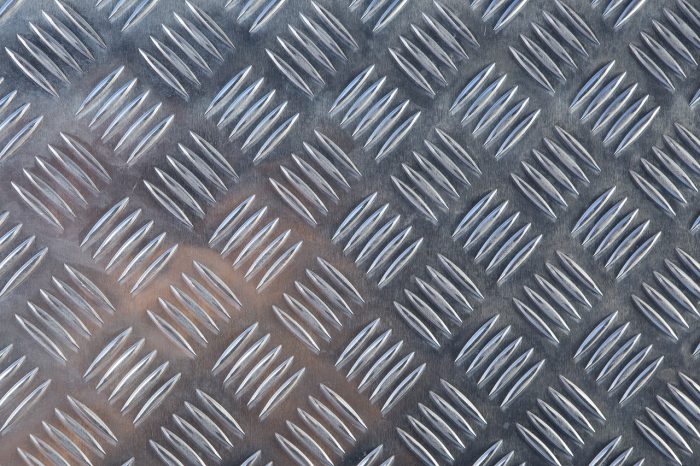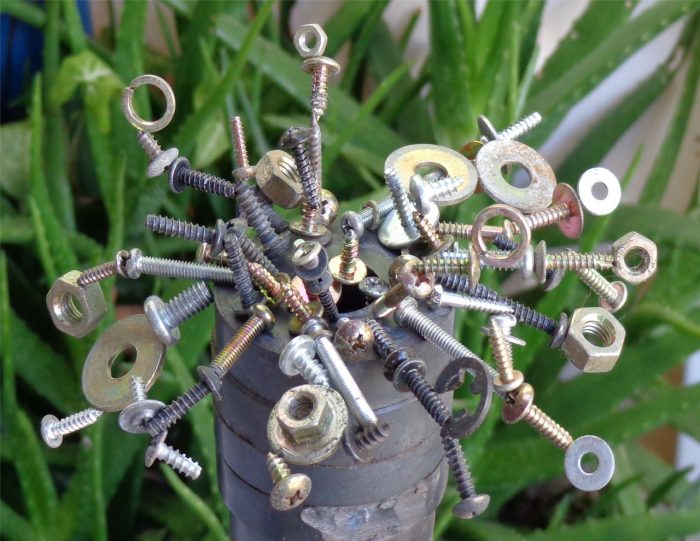
Composing the bulk of the chemical elements on the periodic table, metals are among some of the most versatile and useful known substances. The development of metal-working technologies to create materials was likely one of the most important advances in human history. Metals are ubiquitous in the modern world. Bridges, skyscrapers, dams, and cars—most industrial and large scale constructions are composed entirely or at least partially of metals and metals are an essential component in most modern electronics.
That being said, the term “metal” is very broad and encompasses a number of substances with different properties, such as lead (a dense heavy metal), mercury (a metal that is a liquid), and sodium (a soft metal you can cut with a knife). So what is it that makes a metal a metal, and what are some properties of metals that make them so useful?
What Are Metals?
In chemistry, the term “metal” is normally used to refer to elements occupying groups 3-12 in the d-block of the periodic table. These elements are sometimes called “transition metals.” Metals are distinguished from non-metals in virtue of their properties. Some common properties of metals include:
- Hardness – metals tend to be hard and resistant to deformation
- Malleability & Ductility – metals can bend and change shape without breaking
- Conductivity – metals tend to be good conductors of heat and electricity
- Luster – metals have a unique, shiny visual appearance
- Magnetism – Many metals are ferromagnetic or paramagnetic
In addition to these physical properties, metals have specific chemical properties as well. Metals tend to have low ionization energies and readily form positive ions. Most metals have a basic character and will react with acids to form salts and water.

Metals are used in a number of industrial structures. Credit: Sheba via WikiCommons CC BY-SA 2.0
Metals make up the vast majority of elements on the periodic table. About 91 of the 118 known elements are classified as metals. 6 elements (boron, silicon, germanium, arsenic, antimony, and tellurium) are commonly classified as metalloids and have a blend of metallic and non-metallic properties.
What Makes A Metal A Metal?
So far we have just listed a few common properties shared by metals. A further question is: Why do metals have the properties that they have? That is, what is it about the structure of metallic elements that explains their commonly observed properties?
The unique properties of metals can be explained by their atomic and electron structures. Elements in the d-block of the periodic table tend to have multiple empty orbitals in the electron shell. When metallic atoms conglomerate, their electrons become delocalized and are shared evenly among the atoms. One can think of a metal as a lattice of positively charged cations surrounded by a “sea” of electrons. The large number of empty electron orbitals means that electrons can move around from atom to atom easily. The delocalized nature of metallic bonds is what explains the unique properties of metals.
In the next section, we will take an in-depth look at some key properties of metals and explain how they emerge out of their atomic and electron structures
5 Amazing Properties Of Metals
1. Hardness
Strictly speaking, not all metals are hard at standard temperatures and pressures. Mercury is a liquid at room temperatures and gallium will melt in the palm of your hand on a hot day. Some metals, such as sodium and potassium, are very soft and can be cut with a knife, like a cake.
However, many metals are known for being tough and resistant to mechanical deformation. This toughness is one reason why metals are so useful for industrial and large-scale applications. The hardness of metals can be explained by the way their atoms are arranged with respect to each other. Most metals have very strong intermolecular attractions, which cause their atoms to bunch together very closely. Because the atoms are so close together, there is very little space between them and they cannot move much when an external force is applied. The same principle explains the typically high tensile strength of metals.
The tightly packed physical arrangement of atoms also explains why metals tend to be dense and heavy. Density is a measure of amount of mass per unit of volume. When atoms are very close together, there is a high amount of mass per unit of volume, so metals are dense
2. Malleability & Ductility
One key property of metals that makes them so useful is that they can be shaped and molded without breaking or losing toughness. Metals are very malleable, meaning that they can be compressed or flattened without cracking or shattering. For example, gold is a very malleable metal. A single lump of gold the size of a matchbox can be flattened into a sheet the size of a tennis court. Ductility refers to the capacity of a substance to be molded without losing toughness. Metals are ductile because they can be shaped into new structures without losing strength.

Metals can be pressed into sheets because of their ductility. Credit: Pixabay CC0 1.0
The malleability and ductility of metals are explained by the delocalized nature of metallic bonds. Because electrons are delocalized, sheets of metal atoms can slide against each other without breaking any chemical bonds. This is the exact opposite of what might happen in a brittle ionic compound, for instance. In an ionic compound, atoms are locked into a rigid structure where positive and negative ions are aligned with each other. When one layer is shifted by a force, positive and negative ions become unaligned and repel each other. The repulsion causes the substance to fracture.
3. Thermal & Electrical Conductivity
Metals are also known to be conductive, meaning that they can store and transfer heat and electricity well. The capacities of metals to store and transmit heat and electricity are called thermal and electrical conductivity, respectively.
Thermal Conductivity
Metals are known to be good thermal conductors. Thermal conductivity explains why you can heat a metal pan on the stove and use it to cook. Heat from the stove is transferred to the metal pan. That heat is then transferred to the food when it is cooked. Metals are good thermal conductors because their tightly packed atomic structure absorbs kinetic energy very efficiently. Fundamentally, heat is just the motion of molecules. Heating something up is the same as making its constituent molecules move faster. Since metal atoms are packed very closely together, the motion (heat) of any atom is readily transferred to its neighbors.
Electrical Conductivity
Metals are good conductors of electricity because of their free-moving delocalized electrons. When an electrical voltage is applied to a metal, an electrical field triggers the motion of electron charges. Because the electrons are delocalized, they move very easily under the influence of an electron field. In conductive metals, electrons always flow from the negative terminal to the positive terminal.
4. Luster
Metals are also known for their unique visual appearance. Under light, metals have a characteristic shiny appearance. This aesthetically pleasing luster of metals like gold, silver, and platinum explains their value and their use in jewelry and ornamentation.
The luster of metals can be explained by the interaction of light and electrons. In metals, electrons are delocalized and free to move around. When light (any EM radiation) hits the surface, the electrons absorb photons and enter an excited energy state. When the electron falls back to its ground state, it releases some energy in the form of a photon. Because the amount of energy in the system must remain constant, the photon emitted by the electron is the same frequency as the photon that was initially absorbed by the electron. The human eye perceives this process as the shiny reflective gleam associated with metals.
5. Magnetism

Credit: Pixabay CC0 1.0
Another characteristic property of metals is their capacity to produce and be affected by magnetic fields. A fundamental aspect of electrons is that they produce a magnetic dipole; e.g. a region of magnetic influence with a positive and a negative pole. Under normal conditions, electrons in metals are jumbled around so that their dipoles do not line up with each other.
However, under the influence of an external magnetic field, electron’s will orient themselves so that all their dipoles are pointing in the same direction. The cumulative action of the dipoles results in a macroscopic magnetic field that can push and pull objects. Metals are prone to being magnetized because they have numerous open electron orbitals. Because there are many open orbitals in metals, electrons can move around and change orientation a lot, so it is easier to get their magnetic fields aligned.
Materials that become magnetic under the influence of an external magnetic field are called paramagnetic. Try this experiment at home: Take a screwdriver, some needles, and a kitchen magnet. Touching the needles to the tip of the screwdriver does not do anything as there is no attraction. Next, hold the needles against the kitchen magnet for a minute or two. When you take the needles off, you should find that they now are attracted to the screwdriver tip. This is because the magnetic field of the kitchen magnet realigns the electrons in the needle so that their magnetic poles are all aligned.
Most paramagnetic materials will not stay magnetized indefinitely. Random thermal fluctuations in the material will eventually cause the dipoles to become unaligned again. Some materials are capable of retaining their magnetic properties after the magnetic field is removed. These kinds of materials are called ferromagnetic. Nickel and iron are two kinds of ferromagnetic metals.








